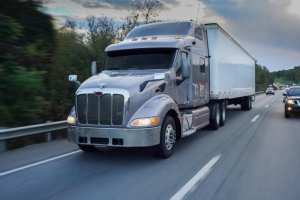
The transportation and logistics industries have been experiencing a reliable increase in the number of jobs available for months now, including a 14-month stretch that saw consecutive job gains each month.
That hasn’t slowed down in 2018. In the first quarter of this year, the trucking industry alone created 18,500 new jobs, according to the Bureau of Labor Statistics. The courier, messenger, warehousing, and storage segments of the industry also added jobs, showing just how much of a boomtime it is for the transportation and logistics industries.
This won’t come as a surprise to those of us in these industries. We’ve been watching the demand for last-mile services grow rapidly, thanks to ever-increasing demand for home delivery and growth in online ordering.
What does this job growth mean for the future?
Job growth in trucking sector is balanced by a shortage of drivers
While the job growth we’re seeing in the trucking sector is certainly positive, it’s important to realize at the same time that the industry is dealing with a historic driver shortage — according to the American Trucking Associations' Bob Costello, it could reach 175,000 by 2026.
Many trucking companies have begun increasing wages and offering or improving incentive programs (such as offering a bonus to drivers who reach their fuel economy and safety goals).
Large amount of job growth is occurring around major urban centers, and this trend is projected to continue
As last-mile deliveries increase, warehouses and shipping facilities are increasing their investment in and around urban centers.
It’s these developments that are spurring so much regional transportation and logistics job growth. As a report by the U.S. Dept. of Education, the U.S. Dept. of Transportation, and the U.S. Dept. of Labor details, the most job growth is likely to occur in and around the metropolitan areas of New York City, Dallas, Los Angeles, Houston, and Chicago — at least through 2022.
Last mile logistics will have to mature quickly not just to meet demand in these cities and across the country, but also to prevent serious congestion and other problems for our transportation infrastructure.
Companies that want to succeed must look ahead to the future
What’s interesting about this particular time in the transportation industry is that while the industry is growing healthily, we’re nevertheless experiencing a highly competitive environment.
There’s Amazon, of course, which has transformed the industry in ways most of us couldn’t have foreseen.
There’s the added competition from gig economy delivery services, like UberRUSH and — again, we see the logistics behemoth — Amazon Flex.
As last-mile delivery demand grows, companies are going to have to become more efficient and work smarter, not harder, if they want to stay competitive.
Employing technology like Omnitracs Roadnet Anywhere fleet routing software, data and analytics programs, and safety solutions can help your company improve everything from your routing processes to driver safety.